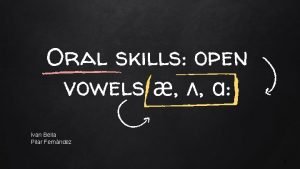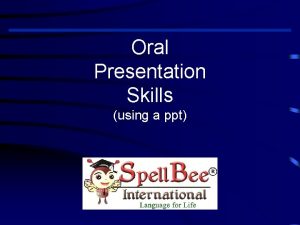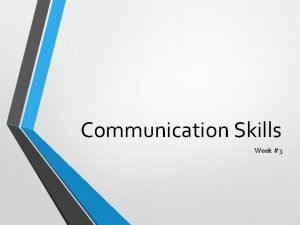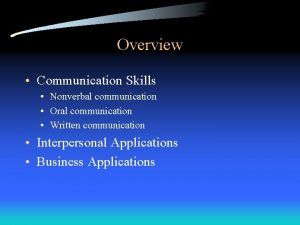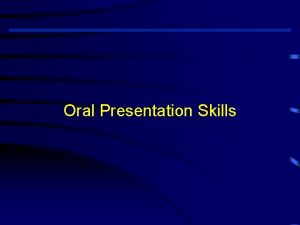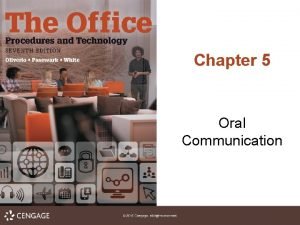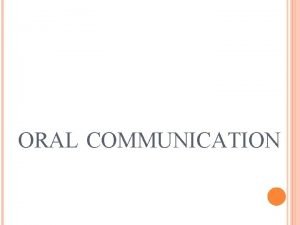The Oral Approach Teaching communication skills to learners







- Slides: 7

The Oral Approach Teaching communication skills to learners who are hearing impaired

What is it? § The Oral Communication approach teaches students who are hearing impaired to communicate through facial expressions, body language, residual hearing (if present), lip reading, and ideally, speech. § It is NOT a form of communication in which any form of signing, such as American Sign Language, or fingerspelling may be used. § It relies heavily on residual hearing and/or technology.

Total Communication Oral Approach § Dates back to the time of Aristotle § History in America tied to “equal education for all” § Think Mary Wollstonecraft § NCLB, 2001 § Higher educational success: literacy rates, vocabulary, opportunities American Sign Language § Sign language was brought to America in 1817 by Gallaudet, and Clerc. § “Uses manual movements to represent concepts” § Rose to popularity during Civil Rights’ Movement § IDEA (dating back to 1975) and ADA, 1990 § Identity in a community

There are environmental demands and learning modalities to consider. Oralism leads to educational success. Individuals who are hearing impaired learn best from visual stimuli.

Better IEP’s by Barbara Bateman IDEA and ADA call for educational supplements and services. § Speech therapy § Technology (hearing aids, cochlear implants) § Special education teachers § Teachers who are hearing impaired

How to decide which method to use? § Child’s learning style and abilities (Think John Locke’s tabula rasa) § Parent involvement § School resources available § Is English the family’s first language? § Either way, age 5 is key. is necessary. Early intervention § Have high expectations! § Teaching deaf students in the inclusive classroom

Sources Consulted 1. http: //www. drury. edu/multinl/story. cfm? id=9901&n lid=166 2. http: //www. personal. psu. edu/smf 5000/education% 20 approaches. html 3. http: //users. ccewb. net/lonerock/hearmemo/appdf. ht m 4. http: //saveourdeafschools. org/unlocking_the_curri culum. pdf





